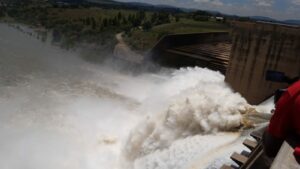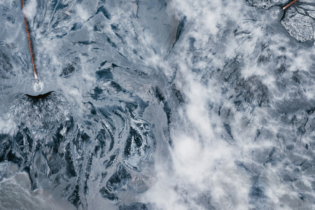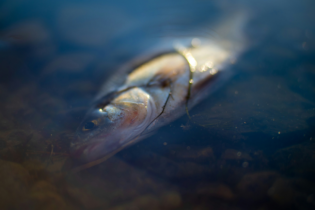Four of South Africa’s major dams are filled to capacity, thanks to the recent heavy rains.
The Vaal Dam in Gauteng, Sterkfontein Dam in the Free State, the Grootdraai Dam near Mpumalanga and the Bloemhof Dam on the border between the North West and the Free state are all brimming over. Sluice gates remain open and the Department of Water and Sanitation has warned communities living near the lower Orange to remain vigilant. The level of the Vaal Dam has slightly improved this week, placing it at 78.8%. This improvement is expected as it is a rainy season for the inland provinces of the country. Last week the dam stood at 78.5%, while last year at the same time it was at 35.9%, a sign that the dam was struggling last year. The Grootdraai Dam recorded an increase from 67.6% last week to 72.5% this week. This means the levels of the dam are lower compared to last year’s level during the same week when it was at 82.7%. At the same time, the Bloemhof Dam has this week taken a slight decrease from 92.0% last week to 91.3%. However, the dam is healthier than the 82.0% it recorded during the same week last year.For the second consecutive week, the Sterkfontein Dam is hovering above the 100% mark. This week it is recorded at 100.5%, while last year at the same time it stood equally stronger but lesser at 94.8%. The Sterkfontein Dam is one of the 14 dams in the Integrated Vaal River System (IVRS) and is used to replenish the System in times of need.
The Mohale Dam in Lesotho recorded a slight improvement from 34.9% last week to 38.5%. In the comparative week last year, the dam was at a very low 4.4% and had been on a decline for months. The second highest dam in the system (IVRS) also in Lesotho, the Katse Dam is currently at 71.6%, up from 68.9% last week. During the same period last year, the dam stood 25.5%. The IVRS itself has seen an increase this week, rising from 80.6% last week to 81.5% this week. Moreover, the present levels of the system are higher compared to the previous year at the same time when it was at 57.3%. Noting that the level of the IVRS continues to raise, the Department of Water and Sanitation continues to call on water users to manage water demand. Water demand management is even more crucial as the temperatures continue rising, and the need to also continue responding to the effects of COVID-19 by ensuring regular washing of hands with soap and water.







